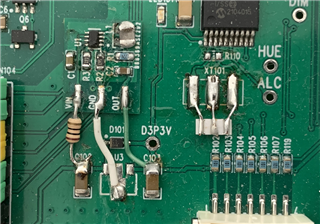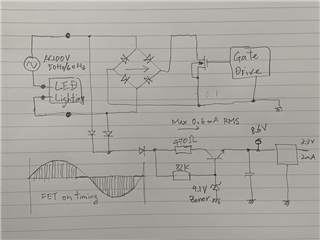Other Parts Discussed in Thread: , PSPICE-FOR-TI
Hi Experts,
Seeking your assistance about TPS629203DRLR. Customer is using this in a controller for LED lighting system. Below is the report:
The power source is 8.6V Max 1mA, which generated from the AC source through 470 Ohm resistance and diode. So that this power source has 470 Ohm series resistance. In fact I have to put 10 Ohm resistor between this power source and TPS629203 VIN terminal, otherwise this chip never started to work. I tried to make sure this with WEBENCH, however I could not set series resistance of Vsource more than 0.0011 Ohm.
Is there any way to modify this or insert external resistor between Vsource and Vin of TPS629203?
Thank you.
Regards,
Archie A.




